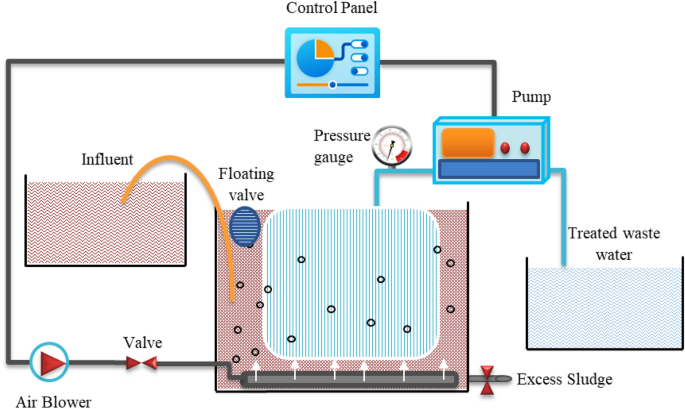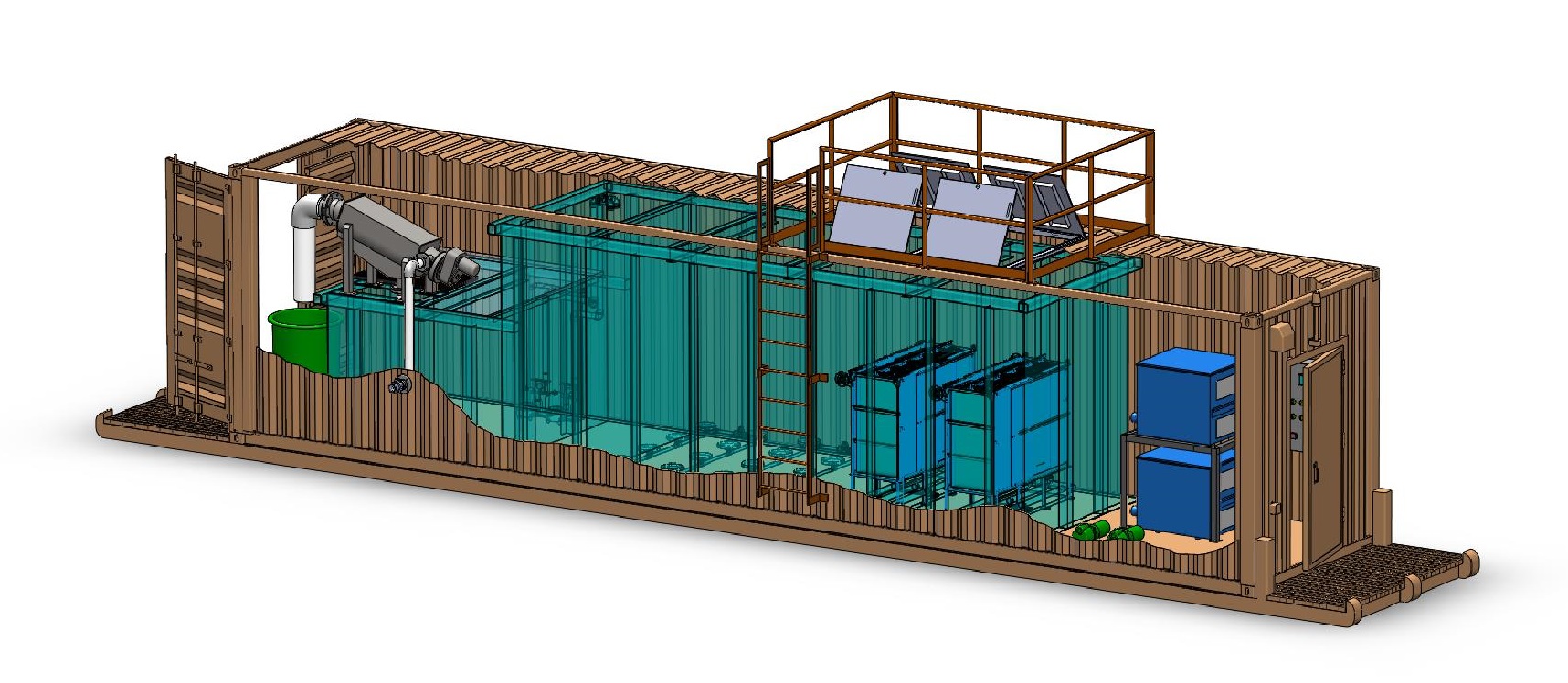Membrane Layer Bioreactors Clarified: Effective Solutions for Clean Water
Membrane bioreactors (MBRs) have become an innovative remedy for attending to journalism challenges of wastewater therapy. By incorporating biological processes with advanced membrane purification, MBRs not only enhance the quality of cured water however likewise decrease the spatial requirements of treatment facilities. As ecological worries heighten, the function of MBR technology in advertising sustainable water management comes to be progressively considerable. The intricacies of their operation, advantages, and possible applications merit a closer examination to completely understand their effect on the future of water treatment.

What Are Membrane Layer Bioreactors?
Membrane layer bioreactors (MBRs) are innovative wastewater therapy systems that integrate organic deterioration processes with membrane purification modern technology. This assimilation enables the efficient removal of contaminants from water, making MBRs a recommended selection in numerous applications, consisting of local wastewater treatment and commercial effluent monitoring.

Among the critical advantages of MBRs is their capacity to create premium effluent, frequently suitable for reuse in irrigation or commercial processes. Furthermore, MBRs need a smaller impact contrasted to traditional therapy systems, making them optimal for metropolitan setups where room may be restricted.
In addition, MBRs can effectively take care of differing influent tons and are much less at risk to the effects of harmful shocks. These characteristics add to their expanding popularity as a sustainable solution for attending to the enhancing demand for clean water while lessening environmental impacts.
How Membrane Bioreactors Job
While the procedure of membrane layer bioreactors (MBRs) may seem complex, it basically revolves around the harmony between biological procedures and membrane layer filtration. MBRs incorporate an organic therapy procedure, usually turned on sludge, with a membrane layer splitting up device to treat wastewater effectively.
In an MBR system, wastewater is first presented right into a bioreactor where bacteria deteriorate natural issue and various other impurities. The biological task minimizes the focus of pollutants while promoting the growth of biomass. Following this organic treatment, the combined alcohol is subjected to membrane layer purification, which can be microfiltration or ultrafiltration, depending on the preferred effluent quality.
The membrane layers serve as a physical barrier, allowing water and small solutes to pass while keeping suspended solids and bigger particles. This enables the system to maintain a high concentration of biomass within the activator, improving the treatment effectiveness.
Moreover, the continual separation of treated water from the biomass helps with a compact style and lessens the footprint of the treatment center. On the whole, the combination of biological destruction and membrane filtration in MBRs results in efficient and dependable wastewater therapy, guaranteeing high-quality effluent appropriate for numerous applications.
Advantages of MBR Technology
One of the key advantages of membrane bioreactor (MBR) innovation is its capacity to generate premium effluent with visit their website a significantly reduced footprint contrasted to traditional wastewater treatment techniques. MBR systems efficiently combine organic therapy and membrane layer filtering, leading to exceptional removal of contaminants, including put on hold solids, microorganisms, and raw material. This capacity brings about effluent that frequently meets or exceeds stringent regulative requirements for reuse and discharge.
Additionally, MBR technology enables higher biomass focus, which improves the treatment efficiency and decreases the required activator quantity. This compact style is particularly useful in city areas where area is limited. The operational adaptability of MBR systems additionally suggests they can adjust to differing influent qualities and circulation rates, making them suitable for a variety of applications.
In addition, the lowered sludge manufacturing related to MBR procedures adds to lower operational and maintenance prices. The membranes work as a physical barrier, reducing the threat of blocking and allowing longer operational durations between cleansing. Overall, the benefits of MBR modern technology make it an attractive option for lasting wastewater treatment, attending to both ecological issues and the demand for efficient resource management.
Applications of Membrane Layer Bioreactors
With their versatility and efficiency, membrane bioreactors (MBRs) discover applications across numerous markets, consisting of metropolitan wastewater therapy, industrial procedures, and even water improvement. In municipal settings, MBRs offer a compact solution for treating wastewater, successfully getting rid of pollutants while at the same time generating premium effluent that meets stringent regulatory criteria. This makes them especially ideal for locations with limited area.
In industrial applications, MBR technology is utilized for treating process water, especially in industries such as food and beverage, drugs, and petrochemicals. These markets gain from MBRs' capability to manage high organic lots and their effectiveness in recovering useful resources from wastewater, such as nutrients and water.
In addition, MBRs play an essential role in water improvement campaigns, making it possible for the reuse of dealt with wastewater for watering, commercial processes, or perhaps as drinkable water after more therapy (Membrane Bioreactor). Their efficiency in getting rid of pollutants and virus makes them a dependable choice for making sure water high quality in numerous reuse applications
Future of Water Therapy Solutions
The future of water therapy solutions is positioned for transformative innovations driven by technical technology and boosting environmental understanding. As international water shortage becomes a pushing problem, brand-new methods, consisting of membrane bioreactor (MBR) systems, are readied to play a critical duty in improving the effectiveness and sustainability of water therapy procedures.
Arising innovations such as fabricated intelligence and machine learning are anticipated to optimize therapy procedures, permitting real-time monitoring and anticipating upkeep. This will certainly improve the total integrity and performance of water therapy facilities. Additionally, innovations in membrane layer materials, such as graphene and nanofiltration, guarantee to boost permeation rates and lower fouling, bring about lower energy usage and operational prices.
Additionally, the combination of eco-friendly energy resources into water therapy plants will add to greener techniques. The round economy design will certainly also obtain grip, urging the healing of beneficial resources from wastewater, such as nutrients and power.
Final Thought

Membrane layer bioreactors (MBRs) have emerged as an advanced service for dealing with the pushing difficulties of wastewater treatment. By integrating biological procedures with sophisticated membrane layer filtration, MBRs not just enhance the top quality of treated water however also minimize the spatial needs of treatment centers.One of the key benefits of membrane layer bioreactor (MBR) technology is its capability to produce top notch my site effluent with a substantially reduced footprint contrasted to conventional wastewater therapy methods.With their adaptability and performance, membrane bioreactors (MBRs) find applications throughout different fields, including local wastewater therapy, industrial processes, and even water recovery.In conclusion, membrane bioreactors represent a considerable innovation in wastewater treatment technology, integrating biological processes with effective membrane layer purification to generate high-quality effluent.